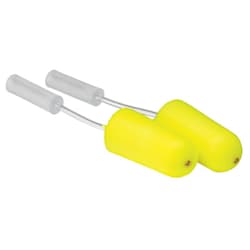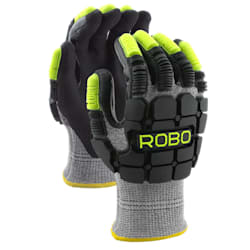Palm Coated Glove Guide
What Palm Coated Glove is Right?
Knit work gloves provide protection to employees from hazards such as cuts, abrasions, punctures, and impacts. The materials such as steel or kevlar that make up these work gloves provide this protection. However, the knit materials do not provide the grip needed to safely execute work functions. An uncoated glove could compromise the grip or dexterity of the worker, or allow potentially hazardous materials to seep through to the hands. Additionally, if gloves are not providing the proper grip or protection, workers could decide to forgo hand protection completely. This is where glove dips and coatings come into play, by giving work gloves additional protection and upgraded performance.

Nitrile Coated Gloves
- Excellent dry grip, resistant to oils, solvents, grease and some acids and caustics
- Nitrile is hydrophobic so it repels water
- Not an allergen like latex
- Nitrile is much more durable than latex
- Nitrile offers resistance to punctures, cuts, snags and abrasions
- Useful in chemical handling, auto assembly, petro-chemical and food processing
- Superb all-around performance
Latex Coated Gloves
- Good for general tasks in warehouses, garages, janitorial & maintenance work
- Flexible & elastic
- Some temperature & cut resistance
- Strong grip
- Tear resistant
- Doesn't do well with gasoline & other organic materials
- Latex is a common allergen, making general use difficult
- Latex has a shorter lifespan than other protective dips
Polyurethane Coated Gloves
- Excellent flexibility & grip in both wet & dry environments
- Protection from oil, grease & water soluble chemicals
- Low cost
- Does not offer much heat resistance
- Not particularly durable, so it could cost more in the long run
- Can cause sweaty, clammy hands, which could cause the hand to slip within the glove




